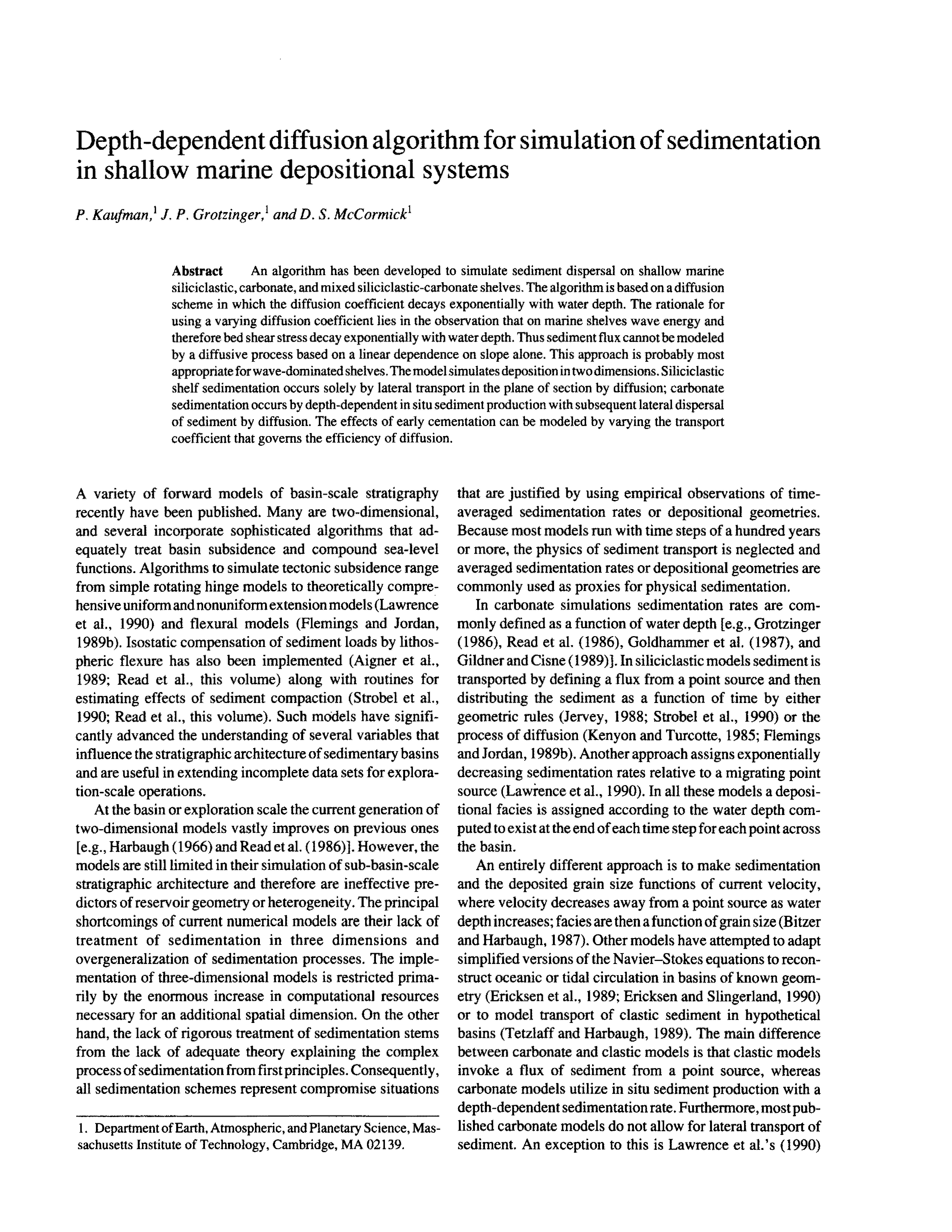Depth-dependent diffusion algorithm for simulation of sedimentation in shallow marine depositional systems
DOI:
https://doi.org/10.17161/kgsbulletin.no.233.20474Abstract
An algorithm has been developed to simulate sediment dispersal on shallow marine siliciclastic, carbonate, and mixed siliciclastic-carbonate shelves. The algorithm is based on a diffusion scheme in which the diffusion coefficient decays exponentially with water depth. The rationale for using a varying diffusion coefficient lies in the observation that on marine shelves wave energy and therefore bed shear stress decay exponentially with water depth. Thus sediment flux cannot be modeled by a diffusive process based on a linear dependence on slope alone. This approach is probably most appropriate for wave-dominated shelves. The model simulates deposition in two dimensions. Siliciclastic shelf sedimentation occurs solely by lateral transport in the plane of section by diffusion; carbonate sedimentation occurs by depth-dependent in situ sediment production with subsequent lateral dispersal of sediment by diffusion. The effects of early cementation can be modeled by varying the transport coefficient that governs the efficiency of diffusion.
Downloads

